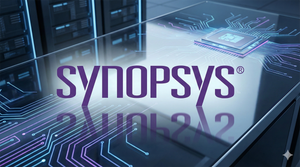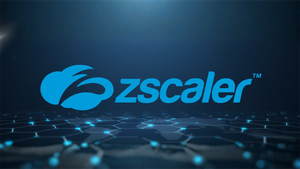
Global financial markets are gripped by a growing sense of trepidation as concerns over an "AI bubble" intensify, casting a long shadow over the tech stock market. With major earnings reports looming, particularly from bellwether companies like Nvidia (NASDAQ: NVDA), investors are on edge, scrutinizing every metric for signs of sustainability in the current AI-driven euphoria. The palpable unease stems from stratospheric valuations of AI-related firms, prompting a critical re-evaluation of whether the current technological surge is a genuine paradigm shift or a precarious speculative bubble poised for a burst.
This escalating apprehension has already translated into significant market volatility and a noticeable sell-off across the tech sector. The tech-heavy Nasdaq Composite has experienced its most significant decline in months, with a basket of top AI-linked stocks officially entering "correction territory." As the market braces for crucial earnings announcements, the outcome could either validate the AI revolution's economic promise or trigger a wider market recalibration, forcing investors to confront the potential for a substantial downturn.
The Cracks in the AI Foundation: A Market Under Scrutiny
The current market sentiment, as of November 18, 2025, is overwhelmingly characterized by escalating fears of an AI bubble, drawing stark parallels to the dot-com bust of the early 2000s. A recent Bank of America survey underscored this anxiety, revealing that 45% of fund managers identify an AI bubble as the foremost tail risk to global markets. Even industry titans, such as Alphabet (NASDAQ: GOOGL) CEO Sundar Pichai, have conceded to "elements of irrationality" in the current AI surge, adding weight to the growing chorus of caution. Key drivers of this concern include the exceptionally high valuations assigned to AI companies, coupled with the immense capital expenditure within the AI space, which some analysts fear could lead to diminished and delayed investor returns. Compounding these worries are broader macroeconomic headwinds, including a weakening U.S. economy and persistent uncertainties surrounding interest rate policies.
The timeline leading up to this moment has seen a dramatic run-up in AI-related stocks throughout 2024 and much of 2025, fueled by breakthroughs in generative AI and widespread adoption across various industries. Companies like Nvidia (NASDAQ: NVDA), a dominant player in AI chip manufacturing, and Microsoft (NASDAQ: MSFT), with its significant investments in OpenAI and integration of AI across its product suite, have seen their stock prices soar to unprecedented levels. This rapid ascent, however, has increasingly been met with skepticism. Initial market reactions to this growing apprehension have been swift and pronounced. Global stock markets have experienced sharp declines, with the Nasdaq Composite notably shedding 4.3% by mid-November, marking its most significant decline in eight months. The S&P 500 and Dow Jones Industrial Average have also registered considerable losses.
A clear indicator of this shift in sentiment is the fact that several baskets of top AI-linked stocks have now officially entered "correction territory," signifying a drop of more than 10% within a short period this month. Nvidia (NASDAQ: NVDA) itself has seen its shares tumble nearly 11% this month, firmly placing it in correction territory. This market behavior signals a palpable rotation of capital away from speculative assets and high-flying growth stocks towards more value-oriented investments. Notably, major tech investors, including Peter Thiel's hedge fund and SoftBank, have reportedly divested their entire stakes in Nvidia (NASDAQ: NVDA), further intensifying anxieties about a potential bubble burst and serving as a stark warning to the broader market.
Despite the widespread concerns, a nuanced perspective exists. Some analysts offer a bullish counter-narrative, pointing to a surge in "directional put buying" within the technology sector—investors betting on a market decline—as a historically strong indicator for future price increases. Furthermore, some strategists suggest that a year-end rally in AI stocks could still materialize, driven by continued innovation and robust demand that has yet to be fully priced in. However, the prevailing sentiment leans towards caution, with the upcoming earnings reports poised to be a critical litmus test for the sustainability of the AI boom.
Companies on the Cusp: Winners and Losers in the AI Reckoning
The looming shadow of an "AI bubble" and the highly anticipated earnings season present a bifurcated landscape for public companies, creating distinct winners and losers depending on their exposure, strategic execution, and ability to demonstrate tangible returns from AI investments.
Potential Winners:
Companies that can clearly articulate and demonstrate how AI is translating into enhanced products, operational efficiencies, and, crucially, top-line growth and improved margins are positioned to weather the storm and potentially emerge stronger.
- Microsoft (NASDAQ: MSFT): With its deep integration of AI across its Azure cloud services, Copilot offerings, and significant stake in OpenAI, Microsoft is a key player. Its ability to monetize AI through subscriptions and enterprise solutions, coupled with its diversified revenue streams, could provide resilience. Strong earnings reports showcasing AI-driven growth in its cloud segment would reinforce investor confidence.
- Diversified Tech Giants: Companies like Alphabet (NASDAQ: GOOGL) and Amazon (NASDAQ: AMZN) that are investing heavily in AI but also possess robust, non-AI-dependent revenue streams (e.g., search advertising, e-commerce, cloud infrastructure) might be better insulated. Their ability to leverage AI for incremental improvements across existing businesses without relying solely on speculative AI ventures will be critical.
- Infrastructure Enablers (with caution): While chipmakers like Nvidia (NASDAQ: NVDA) face immediate scrutiny due to their high valuations, the underlying demand for AI infrastructure remains strong. Companies providing essential components, data center solutions, and specialized software that enable AI development and deployment, but are priced more reasonably, could see continued, albeit more measured, growth. The key for Nvidia (NASDAQ: NVDA) will be to deliver earnings that significantly exceed already high expectations and provide robust, achievable forward guidance.
- Companies Demonstrating ROI: Beyond the direct AI players, companies in traditional sectors that successfully implement AI to reduce costs, optimize supply chains, or personalize customer experiences, thereby boosting their core business profitability, could be viewed favorably. This signals a mature application of AI rather than just speculative investment.
Potential Losers:
Companies that are perceived as having inflated valuations based purely on AI hype, lack clear monetization strategies, or whose growth relies solely on speculative future AI applications are most vulnerable to a market correction.
- Pure-Play AI Startups (especially those not yet public or with high burn rates): Many smaller, publicly traded AI companies that have ridden the wave of enthusiasm without yet achieving profitability or demonstrating a clear path to sustainable revenue are at high risk. A market downturn could make it significantly harder for them to raise capital, potentially leading to liquidity issues or even failures.
- Overvalued AI Software/Service Providers: Companies offering AI-driven software or services that have seen their stock prices surge far beyond their current fundamentals, based on future growth projections that may not materialize, are prime candidates for a significant correction. Investors will demand concrete evidence of customer adoption, recurring revenue, and profitability.
- Companies with Undifferentiated AI Offerings: As AI becomes more ubiquitous, companies whose AI solutions are not unique or do not provide a significant competitive advantage may struggle. The "AI washing" phenomenon, where companies merely brand existing products as "AI-powered" without substantive innovation, will likely be exposed.
- Nvidia (NASDAQ: NVDA) (in case of disappointment): While a potential winner, Nvidia (NASDAQ: NVDA) also stands as a significant potential loser if its upcoming earnings report disappoints. Given the incredibly high expectations and its central role in the AI narrative, even a slight miss on revenue or guidance, or any hint of slowing demand, could trigger a substantial sell-off, impacting not only its own stock but potentially the entire tech sector. The recent sale of stakes by major investors like Peter Thiel's hedge fund and SoftBank underscores the precarious position.
The market is shifting its focus from mere AI potential to proven AI performance. Investors are demanding tangible returns on investment from AI initiatives, seeking companies that can effectively utilize AI to enhance products, drive top-line growth, and achieve greater operational efficiencies and margins. The upcoming earnings season will be a critical filter, separating those with sustainable AI-driven growth from those whose valuations were built on speculative froth.
Broader Significance: Echoes of the Past, Shaping the Future
The growing apprehension surrounding an "AI bubble" is not merely an isolated market event but a significant development that resonates with broader industry trends and carries potential ripple effects across the global economy. This moment serves as a critical juncture, forcing a re-evaluation of investment strategies, technological adoption, and even regulatory oversight.
This event fits squarely into the broader industry trend of rapid technological advancement coupled with speculative investment cycles. The AI boom, while undeniably transformative, shares characteristics with past technological revolutions that led to periods of irrational exuberance. The dot-com bubble of the late 1990s and early 2000s stands as the most frequently cited historical precedent. During that era, internet companies, many with little to no revenue or clear business models, commanded exorbitant valuations purely on the promise of future growth. When the bubble burst, it led to a significant market correction, wiping out trillions in market capitalization and fundamentally reshaping the tech landscape. While the underlying technology of AI is arguably more foundational and impactful than many of the dot-com ventures, the speculative fervor and high valuations in certain segments bear a striking resemblance.
The potential ripple effects of an AI bubble burst are far-reaching, impacting competitors, partners, and even adjacent industries. A significant correction could lead to a tightening of venture capital funding for AI startups, slowing down innovation in some areas. Cloud providers, who have seen massive demand for their infrastructure to support AI development, might experience a deceleration in growth if AI investments cool. Companies that have heavily integrated AI into their products or supply chains could face challenges if their AI partners or suppliers falter. Furthermore, a general market downturn triggered by an AI correction could dampen consumer spending and business investment across various sectors, extending beyond technology.
Regulatory and policy implications are also coming to the forefront. Governments worldwide are already grappling with how to regulate AI, addressing concerns around ethics, data privacy, intellectual property, and market concentration. A perceived "bubble" and subsequent correction could accelerate calls for greater oversight, potentially leading to stricter regulations on AI development, deployment, and investment. Policymakers might become more inclined to intervene to prevent future speculative excesses or to protect investors from perceived risks associated with rapidly evolving technologies. There's also the ongoing debate about antitrust concerns, particularly regarding the dominance of a few large tech companies in the AI space, which could intensify if market volatility highlights their outsized influence.
Comparing the current situation to historical precedents reveals both similarities and crucial differences. Unlike the dot-com era, where many companies lacked viable business models, today's AI leaders often have established revenue streams and clear pathways to profitability. The demand for AI is driven by tangible business needs—from drug discovery and financial modeling to autonomous systems and personalized services—rather than purely speculative consumer adoption. However, the speed of valuation increases and the sheer scale of investment in nascent AI technologies still raise legitimate questions about market efficiency and investor rationality. The key takeaway from history is that while groundbreaking technologies eventually deliver immense value, the path is rarely smooth, often punctuated by periods of overexcitement and subsequent re-evaluation.
What Comes Next: Navigating the AI Frontier
The immediate future of the AI-driven tech market is poised on a knife-edge, with short-term volatility giving way to potentially transformative long-term shifts. The upcoming earnings reports, particularly from key players like Nvidia (NASDAQ: NVDA), will serve as critical inflection points, dictating the market's immediate trajectory.
In the short term, the market is likely to remain highly sensitive to news and earnings surprises. A strong showing from Nvidia (NASDAQ: NVDA) that significantly exceeds expectations and provides robust forward guidance could temporarily alleviate bubble fears, potentially sparking a short-term rally in AI-related stocks. Conversely, any disappointment could trigger a more severe sell-off, reinforcing the bubble narrative and leading to further market corrections. Beyond earnings, investor sentiment will be swayed by macroeconomic indicators, interest rate decisions, and any regulatory pronouncements concerning AI. We might see continued capital rotation, with investors favoring companies demonstrating clear profitability and sustainable growth over those with speculative valuations.
Long-term possibilities suggest a more mature and differentiated AI market. The initial phase of "infrastructure building" (e.g., chip manufacturing, foundational models) may give way to a focus on "application and value creation." This means a shift towards companies that can effectively leverage AI to solve real-world problems, enhance existing products, and create new, economically viable services. Strategic pivots will be essential for many companies. Those that have merely paid lip service to AI will need to either genuinely integrate it for tangible benefits or risk being left behind. Companies that have invested heavily in AI infrastructure will need to demonstrate clear returns on that investment, moving beyond mere technological capability to actual business impact. Adaptations will include a greater emphasis on ethical AI development, robust data governance, and the ability to attract and retain specialized AI talent.
Market opportunities will emerge for companies that can identify and capitalize on specific niches within the AI ecosystem that offer clear value propositions and strong competitive moats. This could include specialized AI software for particular industries, robust AI security solutions, or platforms that enable efficient AI deployment and management. Challenges will include navigating increasing regulatory scrutiny, managing the high costs associated with AI development and talent, and distinguishing genuine innovation from mere hype. The competitive landscape is also likely to intensify, with established tech giants and nimble startups vying for market share.
Several potential scenarios and outcomes could unfold. One scenario sees a "soft landing," where AI valuations gradually normalize without a catastrophic crash, allowing for continued, albeit slower, growth driven by fundamental innovation. Another is a "hard landing," akin to the dot-com bust, leading to a significant market correction, widespread bankruptcies among less viable AI ventures, and a prolonged period of investor caution. A third scenario involves a "bifurcation," where truly innovative and profitable AI companies continue to thrive, while those built on speculative froth collapse, leading to a more discerning market. The most probable outcome lies somewhere between a soft landing and bifurcation, where the market differentiates between sustainable AI growth and unsustainable hype.
Comprehensive Wrap-up: Navigating the AI Revolution's Next Phase
The current concerns surrounding an "AI bubble" represent a pivotal moment for the financial markets and the broader technology landscape. The key takeaway from this period of heightened scrutiny is a fundamental shift in investor expectations: the market is moving beyond the initial excitement of AI's potential towards a demand for demonstrable, tangible returns and sustainable business models. The days of speculative valuations based purely on "AI exposure" are rapidly drawing to a close, replaced by a more discerning approach that prioritizes profitability, clear monetization strategies, and verifiable impact.
Moving forward, the market is likely to exhibit increased volatility as it digests earnings reports, economic data, and regulatory developments. We can anticipate a continued divergence between companies that successfully integrate AI to drive genuine value and those whose AI narratives prove to be more hype than substance. This differentiation will be crucial, with capital flowing towards firms that can showcase how AI enhances their core operations, generates new revenue streams, and improves efficiency, rather than merely consuming vast amounts of investment. The market's assessment will hinge on the ability of companies to translate AI capabilities into concrete financial performance, rather than just technological prowess.
The lasting impact of this period, regardless of whether it culminates in a soft or hard landing, will be a more mature and rational approach to AI investment. It will likely foster a healthier ecosystem where innovation is still rewarded, but speculation is tempered by the need for fundamental value. This reset could ultimately strengthen the AI industry by weeding out unsustainable ventures and focusing resources on truly transformative applications.
Investors should watch for several key indicators in the coming months. Foremost are the earnings reports from major tech players, especially Nvidia (NASDAQ: NVDA), Microsoft (NASDAQ: MSFT), and Alphabet (NASDAQ: GOOGL), for insights into AI-driven revenue growth and profitability. Beyond the headlines, pay close attention to management commentary on AI monetization strategies, capital expenditure plans related to AI, and any shifts in customer demand. Broader economic indicators and central bank policies will also continue to influence market sentiment. Finally, keep an eye on regulatory developments concerning AI, as government intervention could introduce new constraints or opportunities. The AI revolution is far from over, but its next phase will demand a sharper focus on real-world impact and sustainable financial performance.
This content is intended for informational purposes only and is not financial advice







